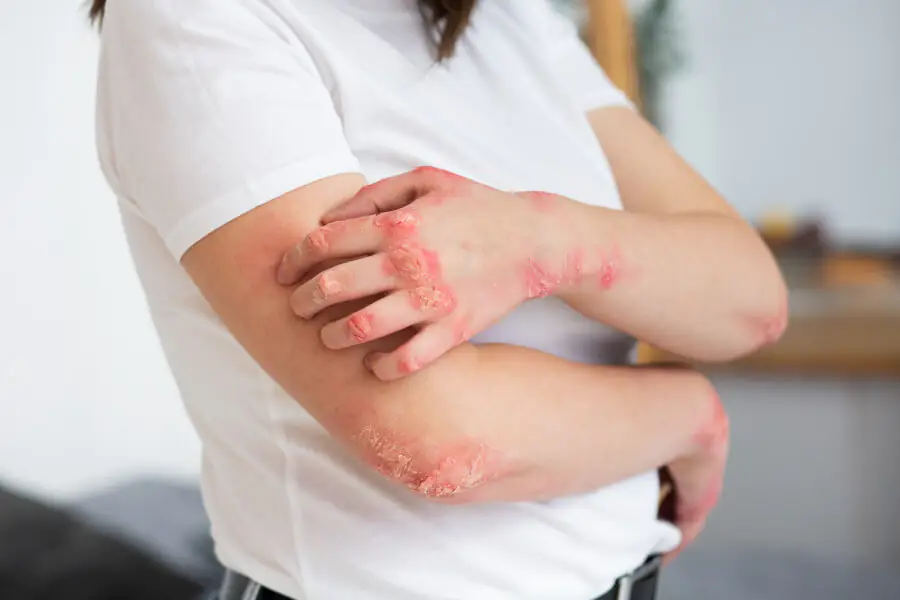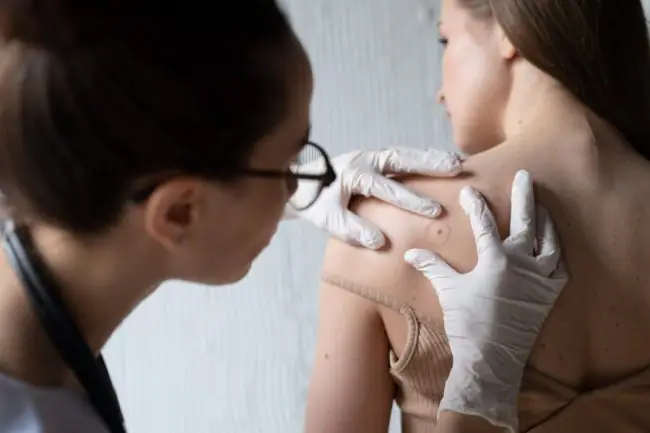Skin and subcutaneous tissue diseases are common health concerns in Spain, affecting a wide population across all age groups.
Subcutaneous tissue diseases, specifically, involve deeper layers of the skin, which play vital roles in temperature regulation, energy storage, and cushioning.
Understanding the symptoms, causes, and treatments for skin and subcutaneous tissue diseases can aid in effective prevention and management.
What Are Subcutaneous Tissue Diseases?
Subcutaneous tissue diseases encompass a range of conditions that affect the connective tissue and fat located beneath the skin. This layer helps protect internal organs, insulate the body, and serves as an energy reserve.
Diseases affecting this layer can cause visible lumps, tenderness, and sometimes serious infections, especially if bacteria invade through broken skin.
The primary categories of subcutaneous tissue diseases include infections, inflammatory conditions, and benign tumors.
Each has unique characteristics, causes, and treatments that are important for patients and healthcare providers to recognize.
Common Skin and Subcutaneous Tissue Diseases in Spain
Spain’s climate, lifestyle factors, and genetic predispositions make certain skin and subcutaneous tissue diseases more prevalent. Here’s a look at some of the most common conditions:
Psoriasis
- Description: Psoriasis is a chronic autoimmune disorder that can affect both skin and subcutaneous tissue layers, leading to itchy, scaly patches.
- Causes: Genetic factors, immune system irregularities, and environmental triggers.
- Symptoms: Raised, red patches covered with silvery scales, often on the scalp, elbows, or knees.
- Treatment: Topical treatments, UV therapy, and biologic drugs are commonly used in Spain for psoriasis management.
Atopic Dermatitis (Eczema)
- Description: This chronic condition causes itchy, inflamed skin and can impact the subcutaneous tissue, especially when scratched.
- Triggers: Allergens, stress, and environmental factors can trigger flare-ups.
- Symptoms: Dry, red patches that can become cracked or thickened, particularly in areas like the elbows, knees, and neck.
- Treatment: Regular moisturizers, corticosteroids, and lifestyle adjustments to avoid triggers.
Cellulitis and Other Subcutaneous Infections
- Description: Cellulitis is a bacterial infection that affects the skin and subcutaneous tissue, often entering through a break in the skin.
- Causes: Commonly caused by Staphylococcus and Streptococcus bacteria.
- Symptoms: Redness, warmth, swelling, and tenderness.
- Treatment: Immediate antibiotic therapy is crucial to prevent the infection from spreading.
Lipomas and Other Benign Tumors
- Description: Lipomas are slow-growing lumps of fatty tissue in the subcutaneous layer that are usually benign.
- Symptoms: Soft, moveable lumps that are typically painless.
- Treatment: While usually harmless, lipomas can be surgically removed if they cause discomfort or grow larger.
Abscesses
- Description: An abscess is a pocket of pus that forms in the skin or subcutaneous tissue due to infection.
- Causes: Often develops from a bacterial infection and can be painful.
- Symptoms: Swelling, redness, and pain in the affected area.
- Treatment: Draining the abscess and, in some cases, prescribing antibiotics to prevent further infection.
Diagnosis of Skin and Subcutaneous Tissue Diseases
Accurate diagnosis of skin and subcutaneous tissue diseases requires a combination of physical examination, medical history review, and diagnostic tools. Some of the key diagnostic methods include:
- Clinical Examination: Dermatologists can often identify subcutaneous tissue diseases through a visual examination. Swelling, lumps, or skin discoloration may suggest deeper tissue involvement.
- Skin Biopsies: A small tissue sample taken from the affected area helps diagnose specific diseases, especially when conditions like psoriasis, dermatitis, or cancer are suspected.
- Imaging Tests: Ultrasounds, MRIs, and CT scans are valuable for evaluating subcutaneous tumors or infections, providing a clear view of tissue depth and size.
Treatment Options for Subcutaneous Tissue Diseases
The treatment of skin and subcutaneous tissue diseases varies based on the condition and severity. In Spain, advanced treatment options are available:
- Topical and Oral Medications: These are commonly prescribed for inflammatory conditions like dermatitis and psoriasis.
- Surgical Removal: Lipomas and certain cysts in the subcutaneous layer can be removed surgically if necessary.
- Emerging Therapies: Spain has access to biologics and immunotherapies, which offer targeted treatment for autoimmune conditions affecting both skin and subcutaneous tissues.
Preventive Measures and Skin Care for Subcutaneous Tissue Health
Prevention and regular care can help minimize the risk of skin and subcutaneous tissue diseases. Here are some tips:
- Sun Protection: Spain’s sunny climate increases the need for sun protection. Using SPF 30 or higher daily can prevent skin damage that may impact the subcutaneous tissue over time.
- Regular Skincare Routine: Gentle cleansing, regular moisturizing, and avoiding harsh chemicals help maintain healthy skin layers.
- Nutrition: A balanced diet rich in vitamins A, C, and E supports skin and subcutaneous tissue health. Foods like olive oil, nuts, and leafy greens are especially beneficial.
- Hydration: Drinking enough water keeps skin and tissues hydrated, reducing the likelihood of dryness or irritation.
Environmental Impact on Skin and Subcutaneous Tissue Diseases in Spain
Spain’s climate and environmental factors significantly impact skin and subcutaneous tissue health. Here’s how:
- Humidity and Temperature: Coastal regions experience higher humidity, which can exacerbate conditions like eczema, while dry, hot areas can lead to skin dehydration.
- Pollution: Urban areas with higher pollution levels can aggravate skin conditions by blocking pores and leading to irritation and inflammation in both skin and subcutaneous layers.
Access to Dermatological Care in Spain
In Spain, access to healthcare for skin and subcutaneous tissue diseases varies between public and private sectors:
- Public Healthcare: Spain’s public healthcare system provides comprehensive coverage but may have long wait times for specialist care.
- Private Healthcare: While private healthcare offers quicker access to specialists, it may be costly and often requires additional insurance coverage.
- Support Networks: Organizations like the Asociación Española de Dermatología y Venereología (AEDV) provide resources, support, and information for individuals facing skin and subcutaneous tissue diseases.
Future Directions in Dermatology and Research in Spain
Spain is investing in dermatology research, focusing on the genetics, environmental factors, and treatment of skin and subcutaneous tissue diseases. Innovations in this field include:
- Personalized Medicine: Tailored treatments based on genetic and lifestyle factors are promising for conditions like psoriasis and atopic dermatitis.
- Teledermatology: Spain has integrated telemedicine into dermatology, enabling remote consultations for skin and subcutaneous tissue issues, especially in rural areas.
- Stem Cell Research: Stem cell therapy is under exploration for its potential to regenerate damaged skin and subcutaneous tissue.
Conclusion
Skin and subcutaneous tissue diseases are common health concerns in Spain, but with awareness, proper care, and timely treatment, many of these conditions can be managed effectively.
By understanding these diseases, recognizing symptoms early, and adopting preventive measures, individuals can promote healthier skin and subcutaneous tissue.
FAQs
What is cellulitis in subcutaneous tissue diseases?
Cellulitis is a bacterial infection affecting the skin and subcutaneous tissue, leading to redness, warmth, and swelling.
What are common subcutaneous tissue diseases in Spain?
Common conditions include lipomas, cellulitis, abscesses, and autoimmune-related diseases like psoriasis.
How does pollution impact subcutaneous tissue diseases?
Pollution can exacerbate skin conditions, blocking pores and causing irritation that affects both skin and subcutaneous layers.
What dietary habits support subcutaneous tissue health?
A diet rich in antioxidants, healthy fats, and hydration is essential for maintaining skin and subcutaneous tissue health.







